All the Fuss About Contact Roles
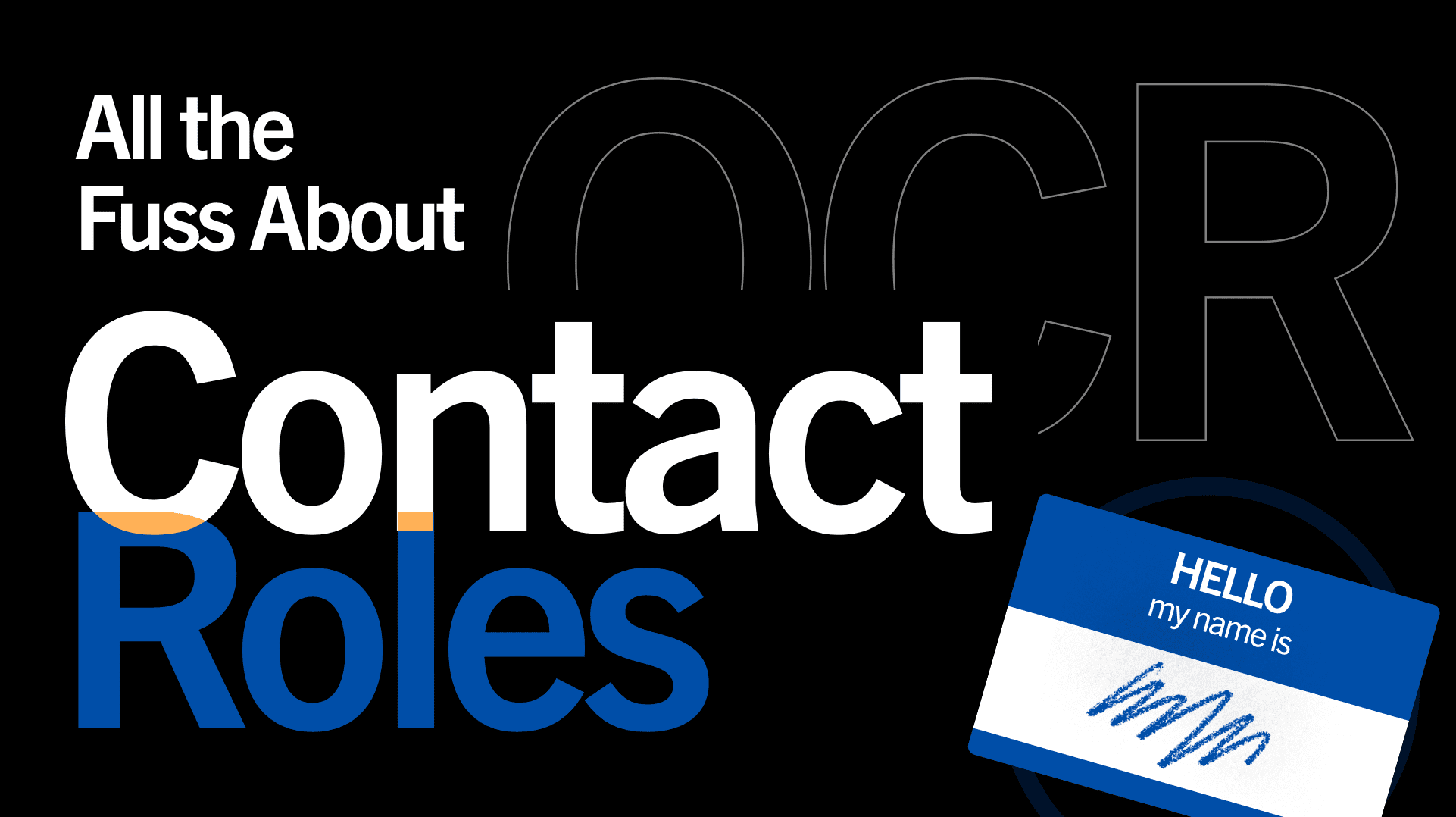
How is marketing impacting the business? Are we sourcing or influencing opportunities and deals? If you’re a marketing leader, you’ve probably been asked these questions. Or, you’ve maybe directed these questions to the rest of your marketing team. These are questions all marketing leaders want to be able to answer. And once you start talking about these questions, you’re really starting to go down the journey of marketing attribution.
Regardless of where you are on your marketing reporting journey, there’s one thing that you need to get right in order to be good at marketing reporting and/or marketing attribution. That one thing is… Opportunity Contact Roles (OCR).
What are Opportunity Contact Roles?
In Salesforce (SFDC), when you create an Opportunity, there’s an automatic relationship created between the Opportunity and the Account. These are automatically linked. But, there is no automatic relationship created between the Opportunity and Contacts. That’s because that relationship is a bit complicated.
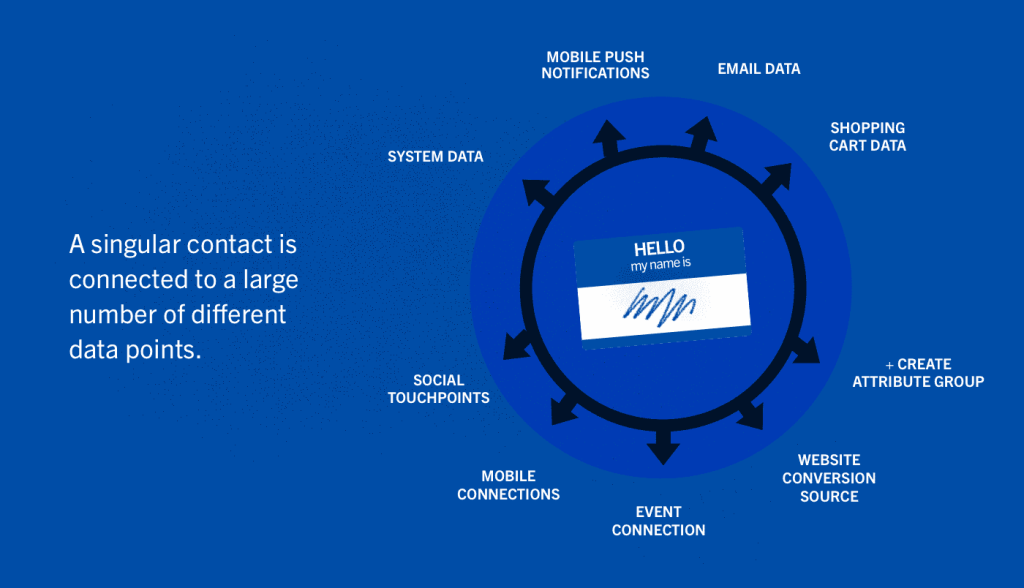
With Opps and Accounts, it’s a 1:Many relationship. One Account has, or can have, one or many Opportunities. With Opps and Contacts, it’s a Many:Many relationship. One Contact can have multiple Opportunities, and one Opportunity can have multiple Contacts. Also… Accounts have multiple Contacts too. So, how does SFDC know which Contact(s) to associate to the Opportunity? Enter the Opportunity Contact Role.
The OCR is a standard object in SFDC that sits between the Opportunity and the Contact that allows you to connect one or more Contacts to that Opportunity and select their role in the Opportunity. Roles are usually things like, “Decision Maker”, “Influencer”, etc. And OCRs are manually associated to the Opportunity by the Sales Rep.
If an Opportunity is created as part of the Lead conversion process–when we convert a Lead to a Contact and associate to an Account–the OCR will automatically be applied… because SFDC knows which Contact is associated to the Opportunity. But, if you create an Opportunity from the Account object, then SFDC doesn’t know which Contact(s) to apply… so it’s a manual process.
Why are OCRs so important?
Now that we all know what an OCR is, we need to talk about why it’s so dang important. Well, here’s why. We market to people. And, people respond to our marketing. Not accounts. And marketing automation platforms and SFDC are designed to track how people interact with our marketing. Therefore, if we want to understand how our marketing is performing, we have to understand the relationship between marketing activities, people and Opportunities. The only way to do that is through OCRs.
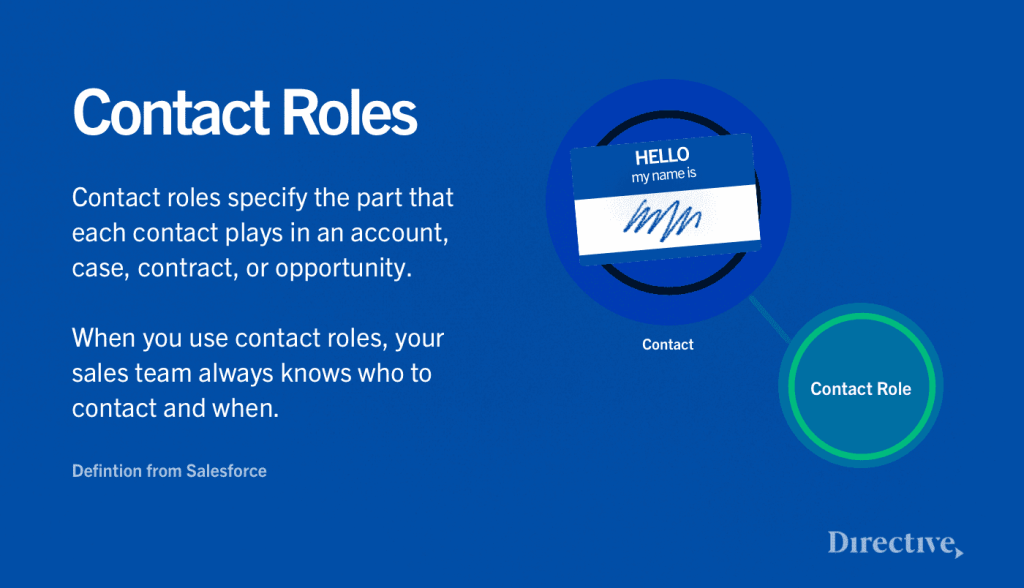
Let’s use an example.
Let’s say we’re talking to a large financial institution and trying to get them to buy our product. We may have a buying committee of 3 people that are actively involved in the Opportunity. But, there are 30 Contacts associated with that Account in SFDC, because it’s a large company. The 3 people that are actively involved in the Opportunity are interacting with both sales and marketing. The rest of the 27 Contacts may or may not be interacting with sales or marketing… but if they are, it’s not in direct relation to the Opportunity. They are likely not even aware of the Opportunity.
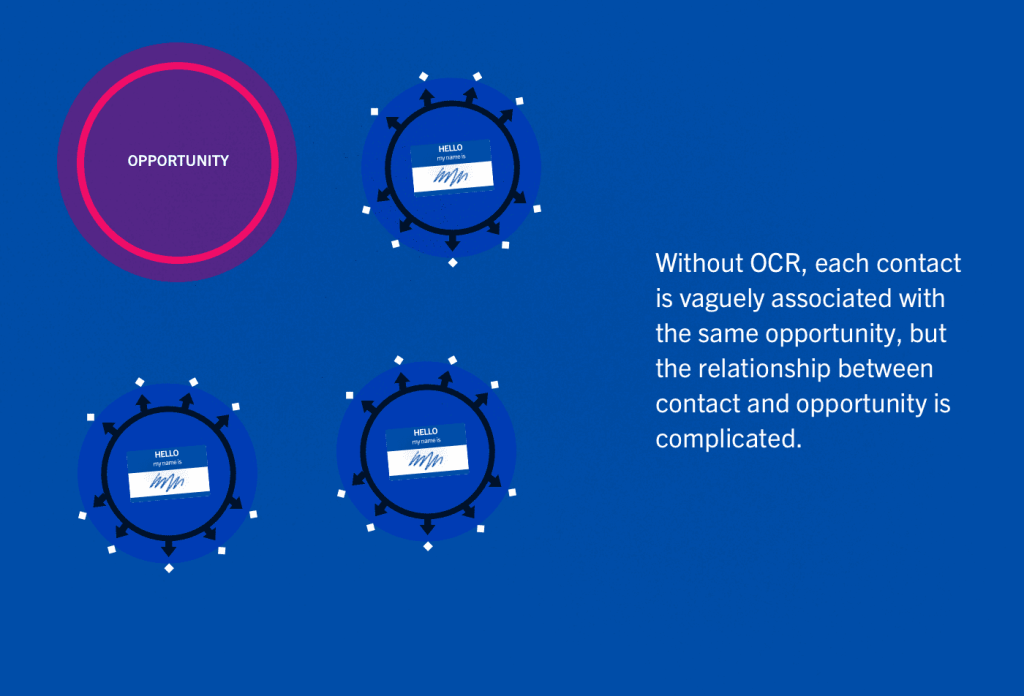
In the situation above, if I’m trying to understand the impact that marketing has had on the Opportunity referenced above, I need to filter out any marketing engagement for the 27 people that aren’t even aware the Opportunity exists and only focus on the marketing engagement for the 3 people that are actively involved. The only way to do this is to associate the 3 people actively involved in the Opportunity with the Opportunity in SFDC via the OCR.
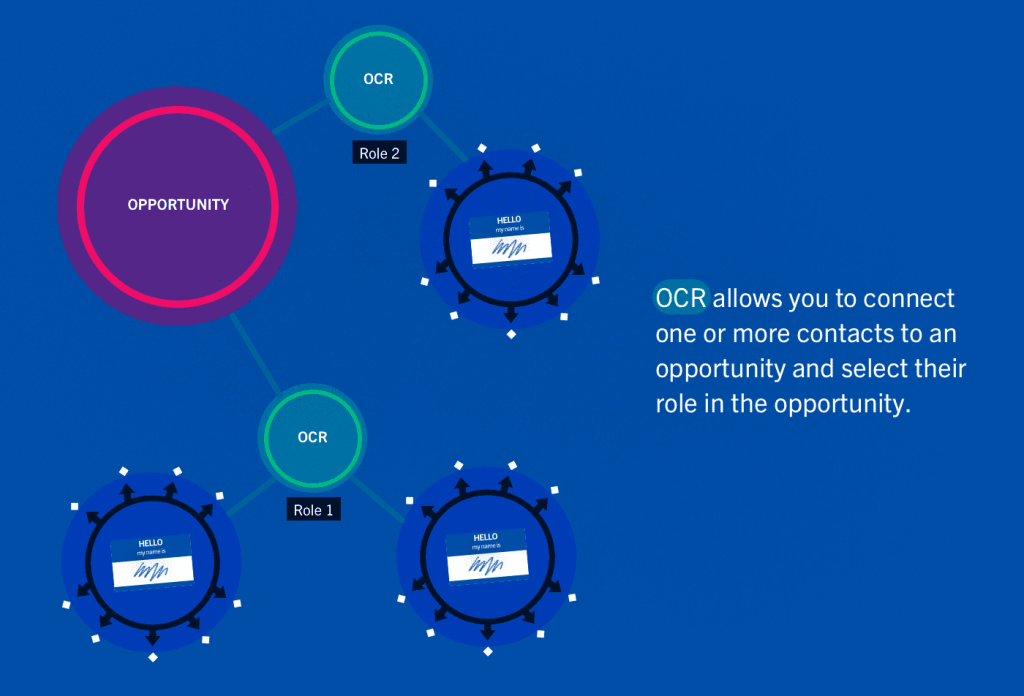
Once you do this, you can easily draw a straight line from marketing engagement to the person and to the Opportunity. This will then apply to any marketing influence reporting you’re doing in SFDC, a marketing automation platform or a marketing attribution platform.
Another key thing to keep in mind here is how marketing automation platforms work. Marketing automation platforms are mostly person-centric databases… meaning they focus their databases on the Lead or Contact. What this means is that in order for them to see that a person (Lead or Contact) is associated with an Opportunity–or in some cases, to even see that the Opportunity exists at all–the Opp has to be connected to a person via the OCR.
So, for reporting in the marketing automation platform, you need the OCR. To segment in the marketing automation platform, you need the OCR.
How do successful companies handle the OCR?
When you first start talking about OCRs, you’re going to get some immediate pushback from the sales team about how much time this is going to take. It’s not going to take a lot of time, but it’s still something that you need to be concerned about. Also, since OCR association is (mostly) a manual process, you can’t just rely on the sales team doing it because it’s the right thing to do. So, we need to put some things in place that help enforce OCR association. Here are some options.
One thing that you can do is to remove the ability to create an Opportunity directly from the Account object. This means that a sales user has to either create the Opportunity during the Lead conversion process, which will automatically set the OCR. Or, the sales user has to create the Opportunity from the Contact record, which will also automatically set the OCR. This will ensure that one OCR is set during the Opportunity creation process.
Another thing that you can do is to mandate OCRs on the Opportunity, regardless of how it’s created. You can make it mandatory that, in order to reach a certain stage in the Opportunity journey, you have to apply at least one OCR. This can be mandated in SFDC so that the user can’t update the stage until/unless they have an OCR applied.
Now… those are some options… but that’s not how the best orgs do it. The best orgs use OCRs to help build and operationalize their buying committees. They do research to understand what roles are represented in their typical and best buying committees. Then, they build their sales process around engaging with those roles and attaching those roles to the Opp through the OCRs. So, at each stage you have to add another member of the buying committee through the OCR, or you can’t advance the Opp. The thinking here is that, if you only have (for example) two-fifths of your buying committee engaged with the Opp, you can’t move it to the fourth Opp stage (out of five stages). That isn’t a good representation of the true stage of the Opp and means that we still need to engage more buying committee members before we can get it to that stage.
What do I get from all of this?
Once you have this in place, there are a few outcomes that you can achieve.
You’ll be able to report on marketing’s ability to source and influence Opps and Deals. It may not be super mature attribution (depending on your tools), but it’s at least a starting point and helps you get to mature attribution more quickly.
You’ll be able to identify exactly which people in an organization are involved in your Opps. This is important for both reporting and segmentation. From a reporting standpoint, you can now do conversion rate modeling and understanding how people convert from one stage to another.
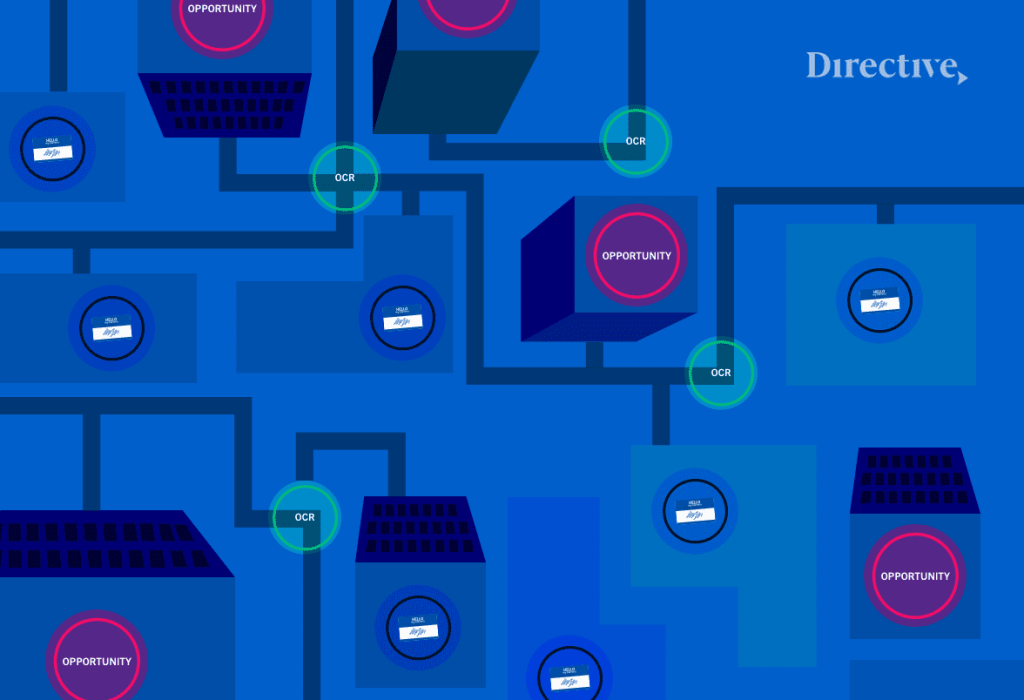
From a segmentation standpoint, you can either target these people with specific messaging designed to accelerate their Opp journey, or you can put these people on an exclusion list that excludes them from certain types of marketing. Either way, you can identify these people and take specific and intentional actions on them.
You’ll have more visibility into your sales process and how we’re progressing on deals. You can quickly and easily see how many members of the buying committee you’re engaged with on an Opp and who you don’t have.
With the above… you’ll also be able to target members of the buying committee that we haven’t engaged with. You can do this from both a marketing and sales perspective, but either way, it gives you an idea of exactly who to go after and with what message.
Conclusion
Ultimately… OCRs are something that the vast majority of organizations struggle with. Many orgs don’t understand the value and deprioritize them due to the manual nature of associating them. Other orgs understand the value, but don’t really understand how to operationalize it and get their teams to do the work. Hopefully, with the above explanation, you have the ammunition you need in your organization to get these implemented and start seeing the value that they can bring to your organization.




